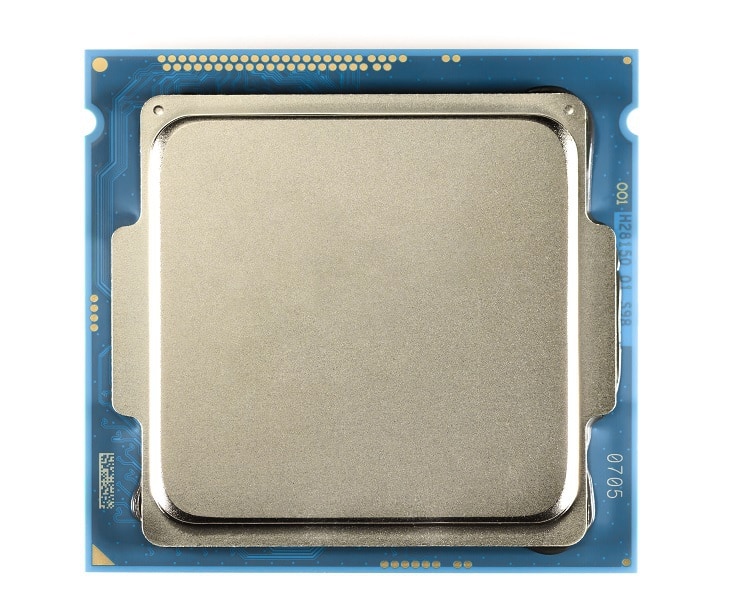Moore's Law hypothesizes that the computer processing power will double every couple of years. While this is not a scientific law, the trend in CPU improvement has roughly followed Moore's Law's suggestions, doubling every two years. This has given rise to a huge variety of CPU generations and versions.
Herein, we will delve into two terms widely used to describe CPU generation and functionality – Quad Core and Dual Core to help you understand CPU models and generations. Understanding these two terms and their implications for your user experience will help you better understand the wider CPU world.
What are "Cores" In a CPU?

The processor core, CPU core, or simply, the core is the brain of the CPU. Cores are individual processing units that make up the central processing unit. Every core receives instructions and performs operations to satisfy the supplied instructions. After processing the information, the data is temporarily stored in the RAM. Permanent information is then saved on your hard drive.
Personal computers had for a long time used single-core processors. Multi-core processors were reserved for servers and other high-end computer systems. Given that servers run many concurrent applications, multi-core processors allowed the server to multitask efficiently and cost-effectively. Since the 2000s, personal computers have been used to run complex software and multitasking applications.
With this in mind, personal computer manufacturers introduced multi-core CPUs to the mass market with the view of providing consumers with advanced computing technology. The vast majority of personal computers in the mass market are dual cores (have two cores), Hexa-core (6 cores), and octa-core (8 cores).
On the performance front, the more cores a CPU has, the better it performs. However, more cores lead to greater power consumption and more heat generation.
It is important to note that Intel uses the term Core to brand some of its processor products (for example the Core i7-7500U or the Core i9-9900K). The use of the term "Core" does not correlate to the number of CPUs in the chip. For instance, Core i9 does not have 9 CPUs in the chip.
What Does Duo Core Mean?
Duo core is another moniker for dual-core. The term was popularized by Intel, which named its dual-core processors Core 2 Duo as part of their branding. The use of the term Duo hinted at the processor having two processors in the CPU. Each of the two core works independently. As such, these CPUs can support multithreading.
What Does Quad-Core Mean?
As the name would suggest, quad-core is a term used to identify CPUs with four cores. In a similar fashion to dual-core, quad-core supports multithreading, with each of the cores independently processing its own thread. However, unlike duo cores, the quad-core CPUs split the work among the CPUs, thereby offering better multitasking performance.
Are More Cores Always Better?
As seen above, multiple core processors are designed to handle more than one task at a time. Rather than the processor rapidly switching between threads for processing, different cores can handle different threads, thereby improving the system's performance, especially when multitasking.
In this regard, the more cores a processor has, the more threads it can handle simultaneously. A Quad-Core CPU with its four cores will perform vastly better than a dual CPU with its 2 CPUs when they have the same clock speed.
However, this does not mean that more cores are always better. While you can eke out more performance from a multi-core processor, the perception of the improved performance depends on the software taking advantage of the more cores. The software should be written to support multithreading.
Software designed to run on a single core will run mainly on one core. This degrades the performance of the processor and plummets the overall efficiency of the system. If the software does not support multithreading (single threaded programs), you can get a better user experience and CPU performance from a dual processor with a higher clock speed.
While all modern operating systems support multithreading, there is still consumer software that has not implemented multithreading. Implementing multithreading is not only expensive but also complex. Moreover, many programs will not accrue sufficient performance improvements from multithreading to justify spending time and money implementing multithreading. It is common for software such as web browsers and mailing apps to use single threading.
Which Is Faster Dual Core Or Quad Core?
A CPU's speed is determined by its clock speed, measured in GHz (gigahertz). The higher the clock speed, the faster the processor. However, in real-world applications, the clock speeds are not absolute. When comparing the speed of dual-core and quad-core CPUs, you need to consider whether the software using the CPU is single-threaded or multithreaded.
For instance, a single-threaded software running on a 3.5GHz dual-core CPU will be 14% to 16% faster than running the same software on a 3.0GHz quad-core CPU. However, when a software supports multithreading - can use all four processors - the quad-core CPU will run the software as much as 70% faster than the dual-core CPU.

